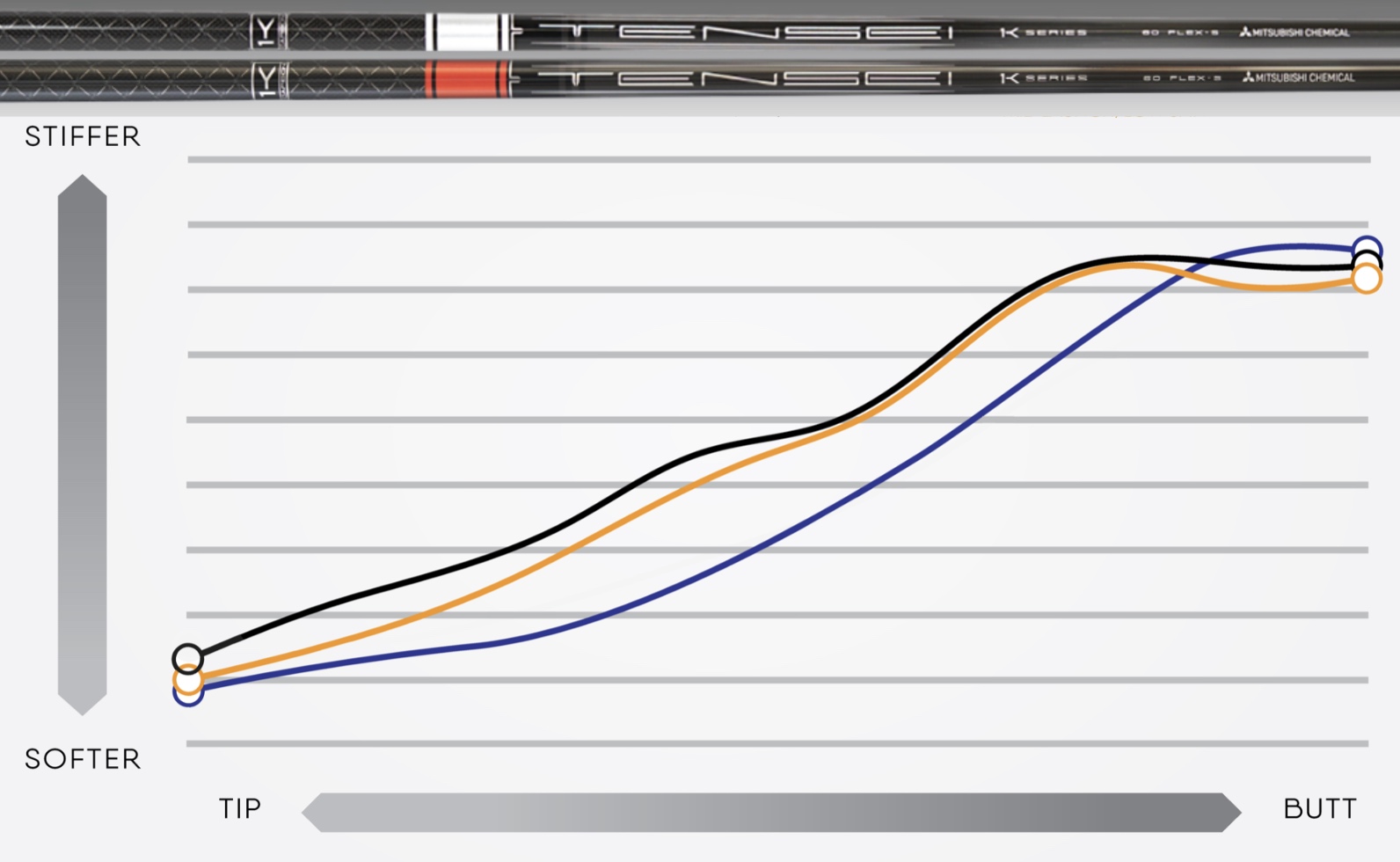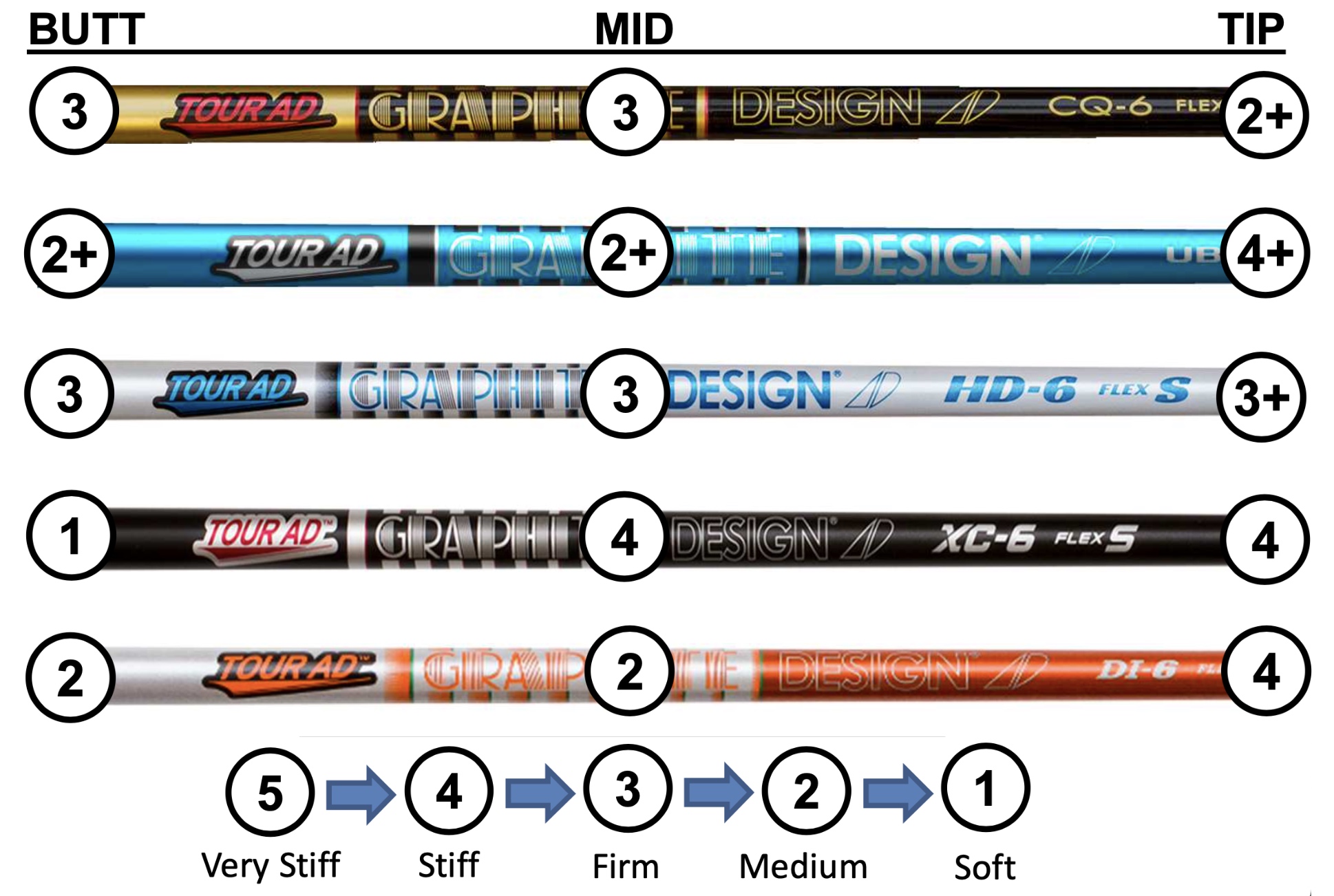What is Shaft Stiffness?
Identifying the right shaft for your swing is important. It's a major goal of clubfitting. Focusing on finding the optimum shaft stiffness bending profile, weight, torque, and deflection properties that match your unique mechanics is essential for allowing efficient transfer of swing energy to the club.

Our clubfitting technologies reveal that the distribution of stiffness through the length of the shaft is the most important property for maximizing your club's performance. There are many methods for measuring shaft stiffness, but we find the EI profile (a function of shaft wall elasticity and shaft local moment of inertia) is most informative.
In this method, the shaft is placed on two supports and a weight is lowered onto a point midway between the supports. A strain gauge measures the shaft's resistance to the weight, and the measurement is made at one-inch intervals along the shaft's length. The data is analyzed and graphed to show how stiffness varies in the tip, mid, and butt sections of the shaft.
The above figure shows the stiffness distribution profiles of four different premium shafts produced by a major manufacturer. Each shaft is classified as regular flex by conventional methods, and it's consistent with the similar stiffness data at the grip end (butt) of the shafts. The same tip stiffness is measured for three shafts (albeit 6 inches from the actual tip due to the limits of the measuring equipment).
The stiffness distribution of these shafts is dramatically different in the distal region between the mid and tip sections. The shaft illustrated by the red line is much stiffer in the distal region than the other shafts and it would be expected to load differently in the swing.
We know from deflection measurements that the stiffness measured in the mid region is reflected back towards the grip end (and forward to the tip). And we know from launch monitor fitting and player feedback that stiffness profiles affect performance (think distance and accuracy).
We now return to our original question: what is shaft stiffness? Feel and flex are common answers, but our goal in fitting is to link stiffness to performance and how a shaft responds to the way you swing a club. Drivers, fairway woods, irons, and wedges all have their unique requirements to achieve maximum performance effects.
Matching the optimum stiffness profile to your swing mechanics is critical to your ability to generate full power from your swing. We recommend working with a custom clubfitter who understands the technology and can take the time to get it right for your game.
Fitting for shaft stiffness should be more than just matching the numbers to charts and lookup tables. It should be about understanding the equipment you need to play better golf. A smooth swing needs a different shaft stiffness profile and club MOI than a quick powerful swing when the clubhead speed through impact is the same for both players.





























 John Taylor
John Taylor
Reader Comments